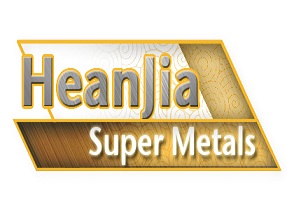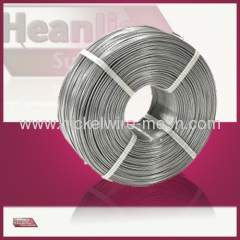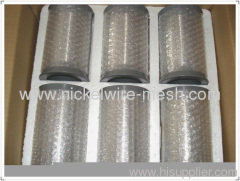
|
Heanjia Super-metals Co., Ltd.
|
Hastelloy C wire Nickel alloy corrosion resistant alloys
| Payment Terms: | T/T,L/C,D/A,D/P,WU |
| Place of Origin: | Hebei, China (Mainland) |
|
|
|
| Add to My Favorites | |
| HiSupplier Escrow |
Product Detail
Hastelloy C aolly contains Cr, Mo and other elements. It has the ability to resistant oxidation and corrosion and its melting point is 1325-1370 ℃
Hastelloy C Wire contains a large number of elements such as Cr, Mo, and single-phase austenite.
Hastelloy C Wire has many excellent properties of corrosion resistant alloys have good resistance to oxidizing and moderately reducing corrosion. Hastelloy C Wire is capable of withstanding high temperature, stress, severe corrosion and erosion prone environment. Hastelloy C Wire details will be elaborated in the following.
Hastelloy C Wire has many excellent properties of corrosion resistant alloys have good resistance to oxidizing and moderately reducing corrosion. Hastelloy C Wire is capable of withstanding high temperature, stress, severe corrosion and erosion prone environment. Hastelloy C Wire details will be elaborated in the following.
General Characteristics of Hastelloy C Wire
An alloy composed of nickel, molybdenum, chromium and iron, Hastelloy C Wire maintains its outstanding properties in extreme heat, holding its strength and resisting oxidation. Hastelloy C Wire also resists chlorine and compounds with chlorine, as well as strong oxidizing acids, acid mixes and salts. One of the most corrosion-resistant alloys, Hastelloy C Wire's exceptional in high-stress applications and in environments prone to repeated thermal shock.
Heat Treatment of Hastelloy C Wire
Anneal: Heat at 2235=20 deg F for a length of time dedicated by the mass and cross section. Air cool generally to 1 to 2 hours.
Age hardening after annealing:
Hold at 1575°-1600°F (857°-871°C) for 8-10 hours
Air-cool to Rockwell C 35-40
Hold castings for 16 hours at aging temperature to achieve hardness and high yield strength (not required or suggested to resist corrosion on for strength at high temperatures).
Applications of Hastelloy C Wire
Combustion chambers
Heat-treating equipment
Collector rings, combustion chambers and exhaust stacks for high-heat applications in for conventional aircraft and jets
Pipe connections, pumps and valves for oil refinery, chemical and petrochemical applications
Machinability of Hastelloy C Wire
Can be machined at low cutting speeds
Use sintered carbide cutting tools and grind to 6-7 degree side clearance and 10-15 degree side rake angle for facing or turning operations
Use short drill and grind with minimum clearance to clear the work – generally about 140 degrees total – when drilling
Use sulfur-based oil coolant when drilling, or when turning, facing, or boring at higher speeds
Chemical Composition
Carbon | 0.15max |
Tungsten | 3.75-5.25 |
Iron | 4.5-7.0 |
15.5-17.5 | |
Molybdenum | 16.0-18.0 |
Vanadium | 0.20-0.40 |
Manganese | 1.0max |
Silicon | 1.0max |
Phosphorus | 0.04max |
Sulfur | 0.03max |
Nickel | remainder |
Wire Further Processing | Cut to length Wire |
Flat Wire | |
Square and Shaped Wire | |
Rewinding and spooling | |
Polishing and cleaning |
The Service Part has more information about Wire Further Processing.
Didn't find what you're looking for?
Post Buying Lead or contact
HiSupplier Customer Service Center
for help!
Related Search
Corrosion Resistant
Nickel Alloy Wire
Nickel Copper Alloy Wire
Titanium Nickel Alloy Wire
Corrosion Resistant Steel Plate
Corrosion Resistant Pump
More>>

















